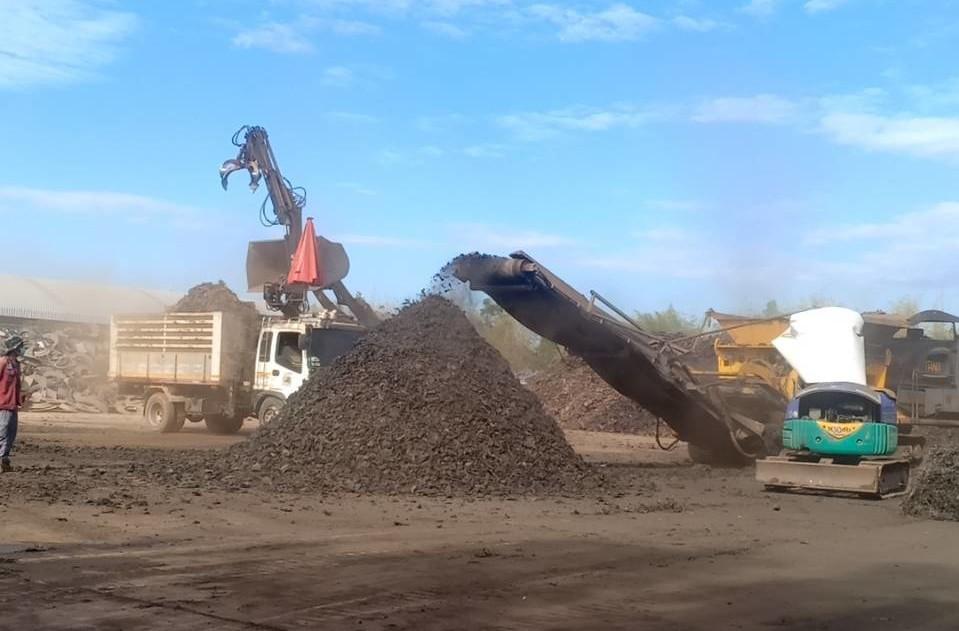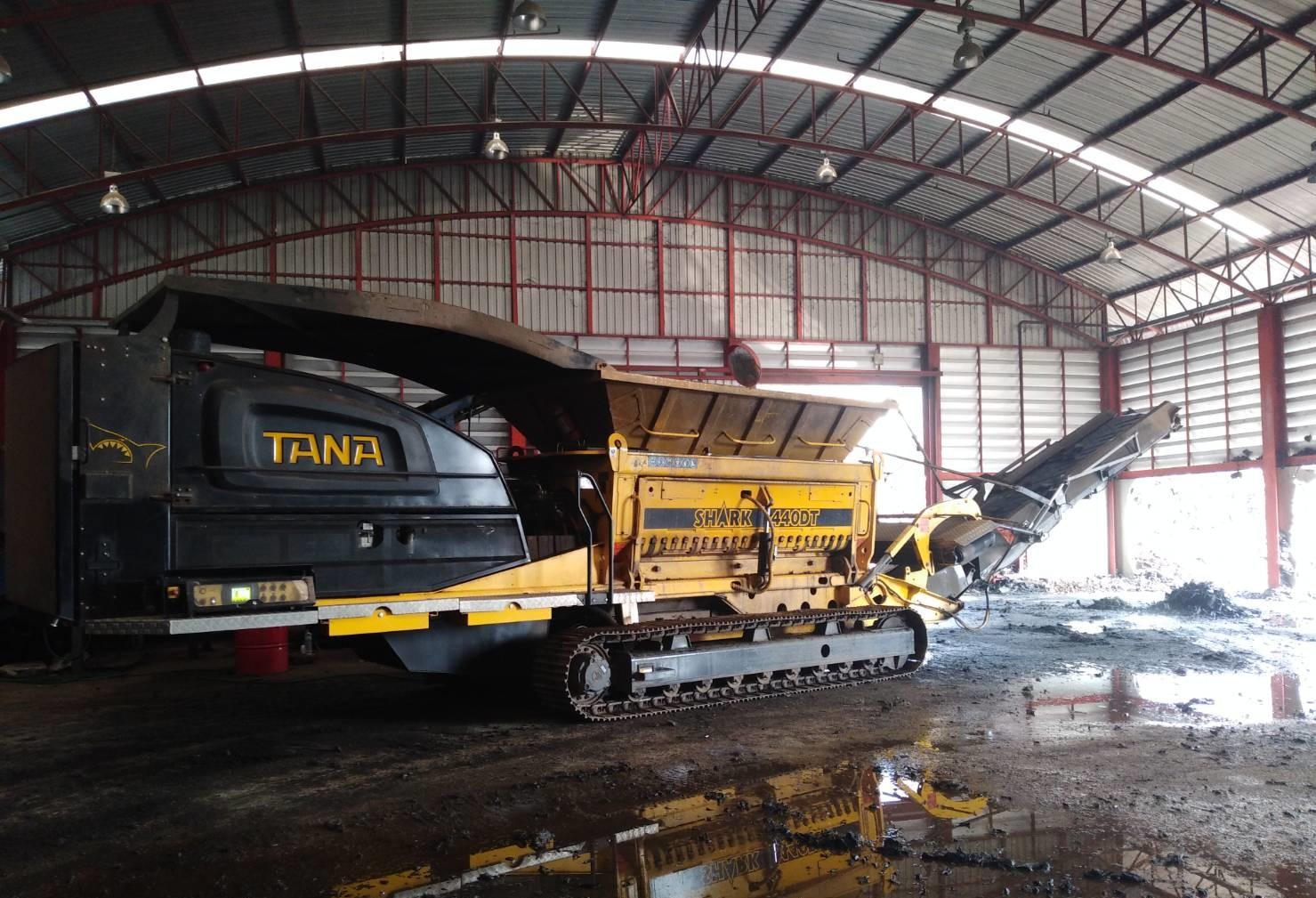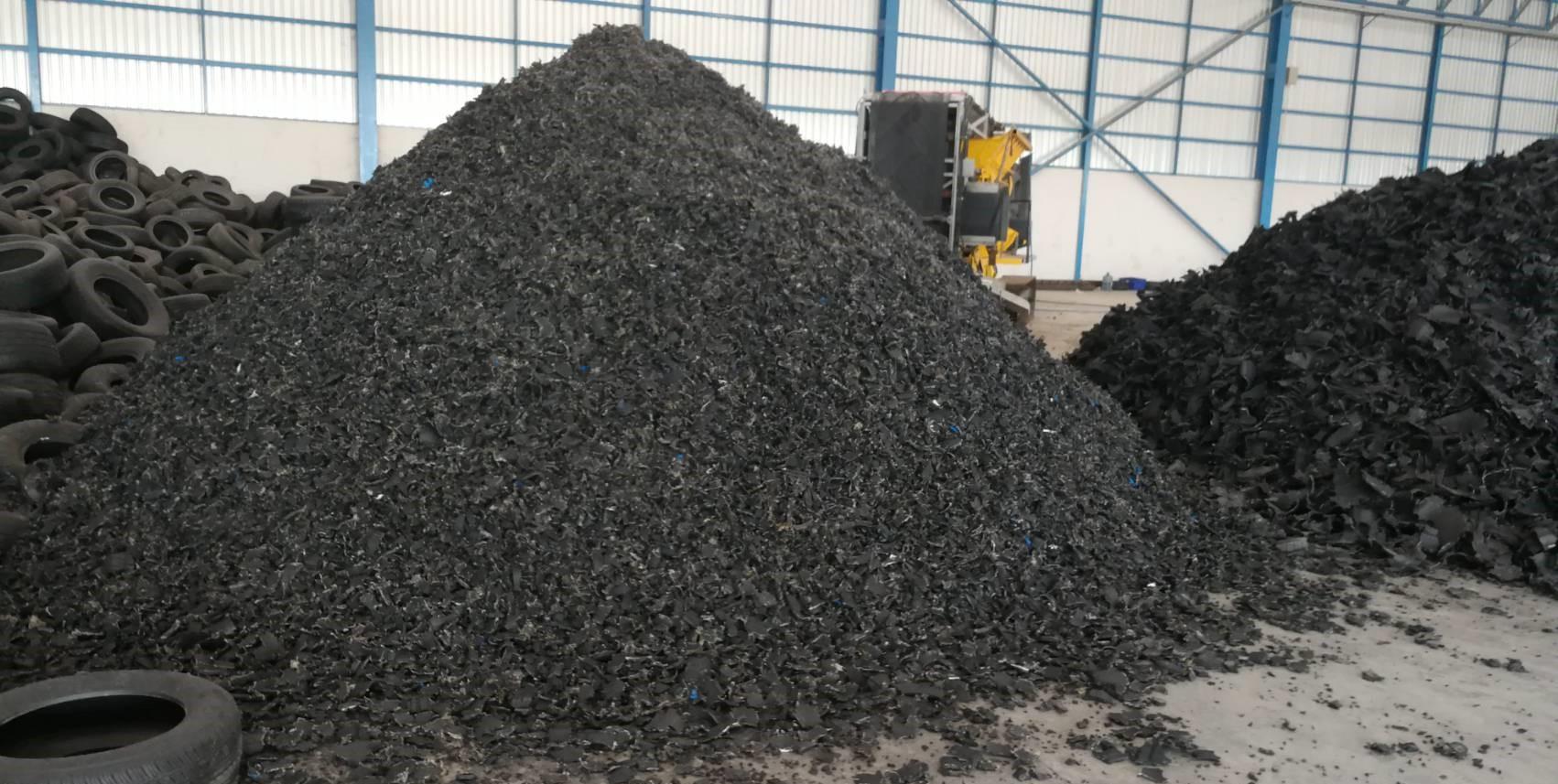Thailand is responding to the growing demand for electricity with a network of small Waste-to-Energy (W2E) plants. Agon Pacific’s TANA 440DT mobile waste shredder produces fuel for one of these W2E plants from factory-rejected car tyres that are unfit for road use.
In Prachinburi, Thailand, a yellow TANA 440DT mobile shredder swallows rejected tyres and spits out small chunks of rubber. At the same time, the machine separates the steel used for reinforcing the tyres.
“The benefit of the TANA is that it does not only cut tyres but shreds them, allowing any metal to be separated from the rubber and nylon to be incinerated. The separated metal is so pure that our customers can sell it directly onwards as a recycled material,” says Tommi Ijäs.
Ijäs is the co-founder and CEO of Agon Pacific, which was founded in 2011. Based in Bangkok, Agon Pacific’s main lines of business include manufacturing boiler pressure parts and boiler maintenance service.
“Rather than building new boilers, our job is to make existing power plants operate longer and with better efficiency,” Ijäs says.
In recent years, the company has expanded its operations in Thailand to the booming W2E or Waste–to–Energy business. Since 2019, Agon Pacific has been providing fuel to Green Power Energy Co., Ltd., which generates electricity from shredded tyres.
“Approximately 2 to 3 percent of new tyres do not meet the quality requirements. Our customer’s boiler requires small pieces measuring about 50 by 50 millimetres, which our TANA waste shredder is easily capable of producing from tyres.”

Growing population creating demand for waste incineration
Ijäs knows Thailand and its society well. He moved there from Finland as far back as 1997. As in many other countries, the circular economy and the reuse of various types of waste are a topical issue in Thailand.
“There is effective waste management in Thailand’s cities, although drivers of garbage trucks still spend a lot of their working time sorting garbage. There is no waste management in the countryside, where a large part of the rubbish is collected in barrels and then incinerated at regular intervals,” Ijäs describes.
For Agon Pacific, the evolving energy and waste management sector means new business. In a country with a growing population, there is a need for services that make the circular economy more efficient. In its Waste–to–Energy service model, Agon Pacific uses a TANA 440DT to produce tyre shred that is suitable for incineration on behalf of the customer.
“Much of Thailand’s electricity is based on gas imported from Myanmar, but Myanmar increasingly needs the gas itself. We want to create solutions for the Waste–to–Energy business, for which there is a clear need both in Thailand and elsewhere in Southeast Asia.”
As the population continues to grow in Thailand and also elsewhere in Southeast Asia, more electricity needs to be produced and also in a more environmentally friendly way. For this reason, Thailand is investing heavily in Waste–to-Energy production. The country’s vision is a decentralised electricity generation system, with the construction of about a hundred small waste-fired power plants in 76 provinces throughout Thailand.
“Because power plants in a decentralised system are in the order of 8 to 10 megawatts, there is no need to renew the existing grid infrastructure. This means there is a huge demand for the processing of combustible materials.”
Mobility enhances productivity
An important factor behind the service agreement signed between Agon Pacific and Green Power Energy was the equipment operated by Agon Pacific. From the outset, it was clear that the equipment needed to shred tyres had to be durable and energy efficient.
“In addition to capacity, it was vital to us that a single piece of equipment would be able to produce several different sizes of shred and run on fuel that is widely available everywhere.”
A ideal tool proved to be the TANA 440DT mobile shredder, which moves on tracks and runs on biodiesel. Among other criteria, the benefits included maintenance that is easy to anticipate by means of remote monitoring.
“The importance of durability combined with the predictability and ease of maintenance is emphasised when the machines are used to shred material for incineration. If the shredder is being repaired, the power plant will not receive the fuel it needs to operate, and the mountain of tyres that the customer has procured for fuel will continue to grow,” says Ijäs.
The mobile shredder covers longer distances on the back of a truck, but on the worksite it can travel short distances on its own. Agon Pacific operates the shredder at a terminal in Prachinbur, located approximately halfway between the tyre plant and the Green Power Energy power plant.
“In operating, the biggest advantage of the mobile shredder is the flexibility it offers. We are able to move the machine on site according to the shredding need, so feeding from the piles of tyres is easy. At the end of the day, we can drive it into the shelter for the night.”

“A mobile shredder is equally valuable in any location”
For Agon Pacific, the mobility of the TANA 440DT is an important advantage. In fact, it has proven to be an irreplaceable advantage, Ijäs says.
“Without the opportunity to offer a quality mobile shredder, the agreement might not have been reached,” Ijäs admits.
Mobile shredders are also more cost effective than fixed shredding lines. They reduce the cost to the service provider, thereby reducing prices of the shredded material to a level that customers are willing to try. If the cooperation discontinues, the shredder can simply be moved elsewhere, Ijäs says.
“Fixed shredding lines are tied to one place, whereas a mobile shredder is equally valuable in any location.”
Agon Pacific’s mobile shredder handles approximately 10,000 tonnes of tyres a year for Green Power Energy. In addition to serving its anchor customer Green Power Energy, the mobility of the shredder has enabled Agon Pacific to expand its Waste–to-Energy business. When the shredder is not needed in Prachinbur, Agon Pacific has transported it to work 300 kilometres away at another customer’s RDF waste incinerator.
“The shredder is easy to move overnight to a new location. It has proven to be extremely effective at the RDF plant, as the small size of the shredded material it produced has helped increase the plant’s output by up to 20 percent,” Ijäs says.

Agon Pacific may also sell TANA shredders itself
At the same time, part of the rapidly growing Waste–to–Energy business in Thailand involves opening and replacing old landfills with modern waste treatment centres. Old waste is dug up and cleaned from the soil.
Agon Pacific’s services have indeed expanded to landfills, where the plastic cleaned with a mobile shredder is shredded into suitably sized pieces for power plants. As with decommissioned tyres and RDF, this is also in line with Thailand’s energy strategy.
For Agon Pacific, Thailand’s energy strategy means a growing investment in the Waste–to–Energy business. The aim is to increase sales of services and, as demand grows, also to begin importing and selling Tana products in Thailand.
“Shredding materials as a service is an important first step, as it has enabled us to concretely show our customers how reliable Tana’s equipment is. Customers here will only commit to buying once the quality has been proven,” Ijäs says.
About Agon Pacific co., Ltd
Established in 2011, Agon Pacific is based in Bangkok, the capital of Thailand.
The company has three main business areas: boiler pressure parts manufacturing, power plant sites and optimisation, and other service and maintenance operations, including spare parts and material supply, imports of Finnish Kesla products, and Waste-to-Energy services for power plants.
Agon Pacific’s CEO is Tommi Ijäs, one of the company’s co-founders. The company is 89% owned by its Nordic operational management, and the remaining owners are from the USA, Canada and Thailand.
In 2020, Agon Pacific had revenues of approximately 6.5 million euros and an operating profit of approximately 0.5 million euros.